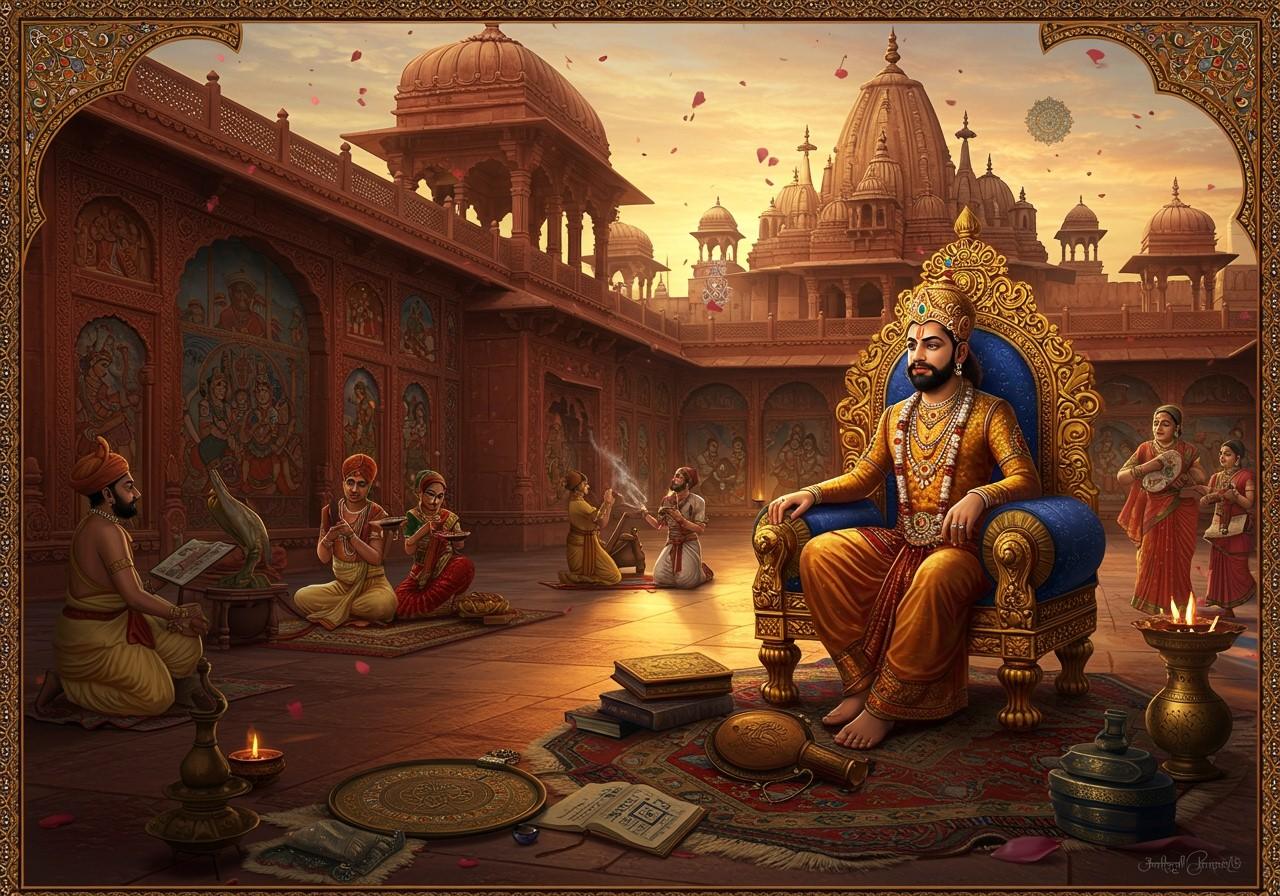
The Varman Dynasty holds a significant place in Indian history, particularly for its contributions to the cultural and political landscape of ancient Assam. This article serves as a comprehensive guide to the Varman Dynasty, exploring its origins, prominent rulers, achievements, and lasting influence.
Origins and Rise of the Varman Dynasty (350-650 AD)
The Varman dynasty, the first historical dynasty of Kamarupa (present-day Assam), reigned from 350 to 650 AD. Founded by Pushyavarman, a contemporary of Samudragupta, the dynasty initially served under the Gupta Empire. As Gupta influence declined, Mahendravarman (470-494 AD) asserted independence through symbolic horse sacrifices, marking a pivotal moment in Assam’s history.
- Founder and Early Rule: Pushyavarman established the dynasty around 350 AD, laying the foundation for a powerful lineage in Kamarupa. This marked the beginning of a significant period in Assam’s history, transitioning the region into a more structured political entity. Inscriptions and historical texts provide glimpses into the socio-political climate of the time, revealing the circumstances that led to the Varman dynasty’s rise.
- Capital and Expansion: While their initial capital was in Kamarupa (present-day Assam), the Varman dynasty’s influence extended beyond this region. Historical accounts suggest they also held sway over parts of Bengal and East Bihar, with a secondary capital at Bikrampur (present-day Bangladesh). This expansion demonstrates their significant political power and reach in the region.
Prominent Rulers and Their Contributions
The Varman dynasty boasted several influential rulers who shaped the course of its history. Among them, Bhaskaravarman stands out for his diplomatic acumen and patronage of the arts.
- Bhaskaravarman (c. 590-650 AD): A renowned king, Bhaskaravarman maintained diplomatic ties with Harshavardhana of the Gupta Empire. His reign is marked by cultural flourishment, as he extended generous support to scholars, poets, and artists, fostering a vibrant intellectual and artistic environment. This patronage significantly enriched the cultural landscape of the region. Bhaskaravarman’s interactions with neighboring kingdoms and his administrative reforms further solidified the Varman dynasty’s power.
- Mahendravarman (470-494 AD): Known for his assertion of independence from the Gupta Empire, Mahendravarman performed horse sacrifices, a symbolic act solidifying the Varman dynasty’s sovereign rule. This act marked a significant turning point in Assam’s history, establishing the region as an independent power. His strong leadership and military achievements laid the groundwork for future expansion and prosperity under his successors.
Cultural and Architectural Legacy
The Varman dynasty left a lasting legacy through its promotion of Hinduism and the construction of magnificent temples and religious monuments. These structures offer valuable insights into the architectural styles and cultural practices of the era.
- Religious Patronage: The Varmans were devout Hindus and actively promoted the religion within their kingdom. They commissioned the construction of numerous temples and religious sites, fostering a strong religious and cultural identity. These actions solidified Hinduism’s presence in the region and contributed to its rich cultural tapestry.
- Architectural Marvels: The architectural style of the Varman period is reflected in various surviving structures, showcasing the dynasty’s artistic sensibilities and building expertise. These monuments stand as testaments to their cultural heritage and provide valuable insights into the architectural practices of ancient Assam. Efforts to preserve these sites continue to this day, ensuring their legacy for future generations.
Exploring the Varman Dynasty: Further Resources
For those eager to delve deeper, numerous resources offer in-depth information:
- Scholarly Works: Books and journal articles provide comprehensive historical analyses of the Varman dynasty, offering detailed insights into its various aspects.
- Online Resources: Digital archives, databases, and historical websites offer accessible information and research materials for a broader understanding.
Poojn.in: Connecting You to India’s Spiritual Heritage
At Poojn.in, we offer a wide selection of authentic puja items and resources that connect you with India’s rich spiritual traditions, including those relevant to the Varman dynasty era. For devotees interested in deities worshipped during that period, we provide:
- Lord Shiva Murtis: Discover beautifully crafted murtis of Lord Shiva, a prominent deity during the Varman period.
- Mangalam Camphor: Enhance your puja rituals with high-quality camphor, an essential element in traditional Hindu ceremonies.
- Explore Kandariya Mahadeva Temple: Delve into the history and religious significance of this architectural marvel, potentially offering insights into temple architecture of the Varman era.
- Badami Cave Temples: Learn about the rock-cut architecture of the Badami Cave Temples, showcasing another facet of ancient Indian temple construction and possibly influencing styles in other regions.
Visit www.poojn.in to explore our complete collection and enrich your spiritual practices.
Conclusion
The Varman dynasty’s reign represents a pivotal period in Assam’s history. From its establishment by Pushyavarman to the cultural flourishing under Bhaskaravarman, the dynasty’s contributions to the region’s political, religious, and artistic landscape are undeniable. Exploring the Varman legacy offers a deeper understanding of India’s rich and diverse past.


